10 Interesting Red Fox Facts for Kids
Red Foxes are common across North America, Europe, and Asia in the Northern Hemisphere. They have the widest range of any carnivore and are the biggest of the fox species. They have a distinctive physical look, with a long tail and short legs.
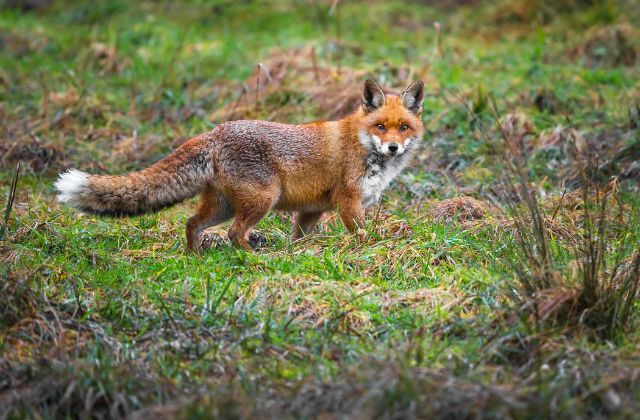
In this article, we have compiled a comprehensive list of interesting Red Foxes Facts for Kids to help you in learning everything there is to know about Red Foxes.
Some basic facts about the Red fox:
Name: Red Fox
Scientific name: Vulpes vulpes
Family: Caninae
Genus: Vulpes
Total Living Species: 24
Lifespan: Between 1 and 3 years (average)
Diet: Omnivorous
Weight: Between 1.5 and 20 pounds
Here are some interesting facts about the Red fox:
1. Red Foxes are the largest foxes in the world.
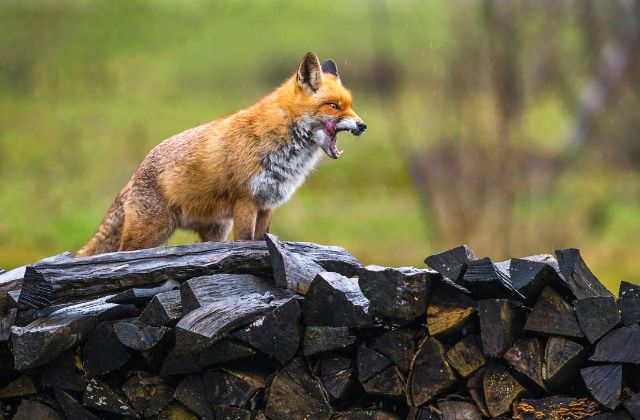
Red foxes average 36-42 inches (90-105 cm) in length. However, the tail accounts for around 14-16 inches (35-40 cm) of its length. Red foxes are roughly 16 inches tall and weigh about 10-15 pounds (5–7 kilograms). Their tail is 760 – 1,600 mm (30 – 63 inches), and their ears are 7.7-12.5 cm (3-5 inches) long. The front foot is 60 mm in length and 45 mm wide. The breadth of the back foot is 38 mm, and it measures 55 mm. The largest red fox weighed roughly 17.2 kg (38.1 lbs) and measured 1.4 meters in length.
2. The most common fox is the red fox.
The red fox has the largest geographical distribution of any of the 280 species in the order Carnivora. While its natural habitat is a combination of scrub and forest, its adaptable diet allows it to thrive in various settings. As a result, it may be found across the Northern Hemisphere, from the Arctic Circle to North Africa, Central America, and the Asian steppes. It’s even called an invasive species in Australia.
3. The Red Foxes aren’t always red in color.
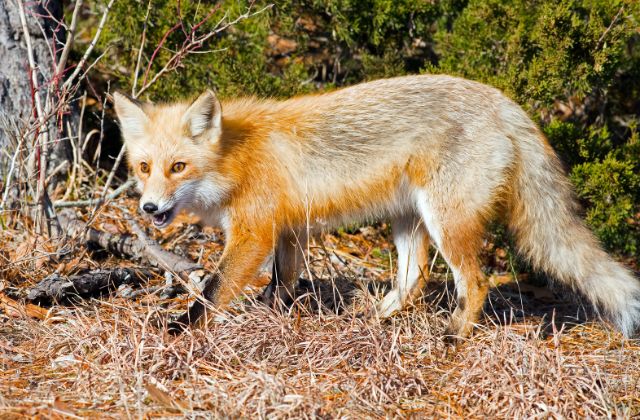
The red fox comes in a variety of hues, including silver, black, orange, or a combination of all three. While color differences occur naturally, mankind has bred foxes for fur, resulting in a wide range of patterns. Marble foxes are white with grey or black streaks; cross foxes are red with back patches, and pink champagne foxes have peachy-white hair and a pink nose.
It has a coat of long outer hairs and soft, delicate underfur that is often a deep reddish brown in color. It has black ears and legs, and its tail is frequently tipped with white. However, additional coat colors do exist. In North America, red foxes can have black or silver coats. Silver fur is formed when white hair is mixed with a black coat. The cross fox, sometimes known as the brant fox, is golden brown with a black cross going between the shoulders and down the back.
4. The Red Fox can survive in any habitat.
The red fox is an incredibly resourceful mammal, capable of surviving in a wide variety of various climatic circumstances, from subtropical areas to cold tundra. Foxes may be found in practically every habitat, including coastal cliffs, sand dunes, salt marshes, peat bogs, high mountains, and woods, and they are especially common in cities.
Red foxes are among the top 100 most invasive animals in the world. They love diversified settings, including parts of woodland, meadows, and other vegetation. They do, however, exist in a variety of settings ranging from Arctic tundra to parched desert. They adapt well to human presence and have populations in many major cities and suburbs.
5. Red foxes are lone hunters.
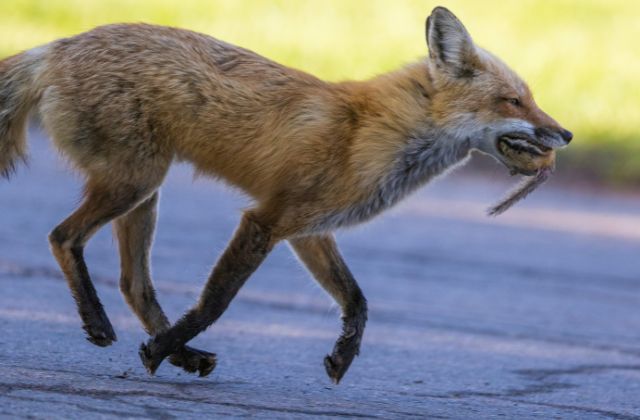
In the wild, Red foxes would eat rabbits, mice, birds, eggs, frogs, and other small animals, or even insects or worms. They also enjoy eating fruits and vegetables, as well as fish. Furthermore, they also consume other readily accessible foods such as dead animals, grain (particularly sunflower seeds), rubbish, and domestic chickens. If they live around humans, red foxes will happily eat pet food. Even in the dead of winter, they are adept at obtaining their food.
6. Red foxes hunt the Arctic foxes.
The red fox may be to blame for the decline in Arctic fox numbers. The red fox is expanding into the Arctic tundra and battling for food as temperatures rise. Red foxes are extraordinary hunters, and to make matters worse, they devour Arctic foxes as well. None of this speaks well for the future of the Arctic fox.
7. The red fox has excellent vision, yet it responds to movement.
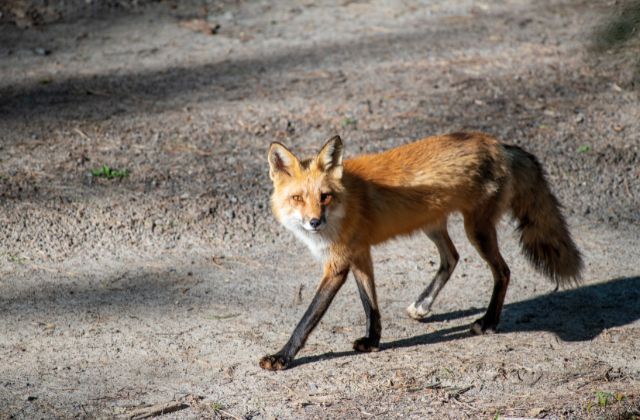
Red foxes have a larger range of vision than humans and can see well in low light. The fox has a viewing angle of 200 degrees, whereas humans have a visual angle of 180 degrees. Their eyes have six to eight times the number of rod cells as humans, making them more sensitive to dim light. They can quickly see the objects that are moving but might not be able to notice the still ones.
8. A single territory of the red fox contains between 2 and 8 foxes.
The red foxes are wild animals who live in family groups and share territories. The size of these territories also depends on their habitat. Each territory is occupied by at least 6-8 members of a family group.
9. Red foxes can hear at supersonic speeds.
The hearing capacity of foxes has been reported to be reduced between 5-11 kHz, with a discernible reduction of around 8.5 kHz, but they can hear sounds well at 10-14 kHz [25]. Given their calling frequencies, red foxes would almost probably pick up on some of the infrared and ultrasounds generated by camera traps.
10. Red foxes sleep for an average of 9.8 hours every day.
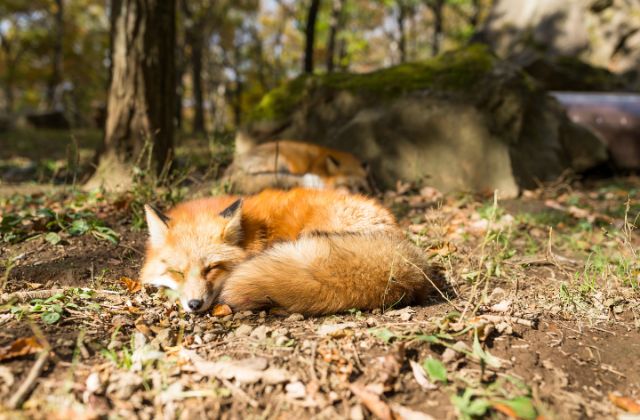
In the wild, red foxes will sleep for more than eight hours every day, with the average being around ten hours in a 24-hour period. During the winter, red foxes may sleep for up to 12 to 14 hours every day.
Conclusion
Red foxes are some of the most fascinating creatures, aren’t they?
We hope you liked the above facts about the red fox for kids. For more such facts, visit our website!
